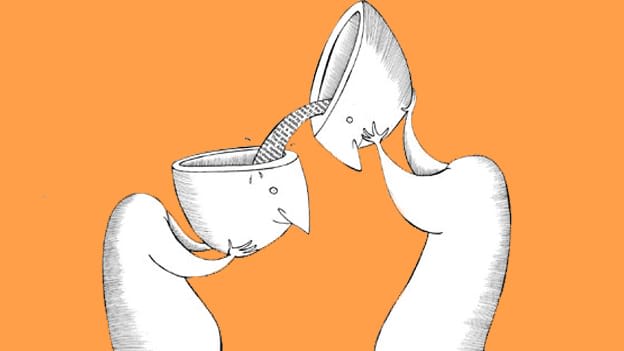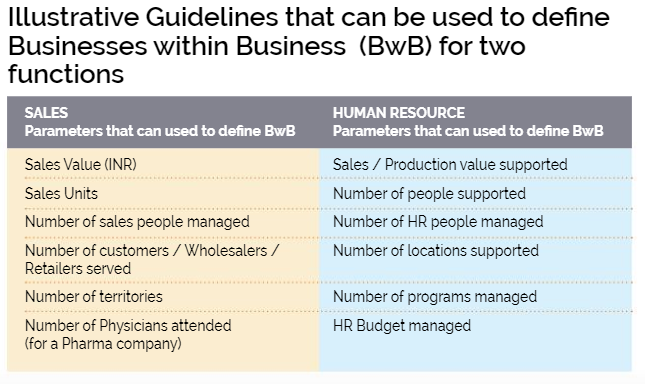Accountability with a higher purpose

For leaders in organizations, establishing accountability is still a challenging issue. Many perspectives have been provided by leading management practitioners and academicians on establishing accountability within an organization. Most of them try to approach through a behavioral angle to establish accountability and these desired behavioral changes are directed at two levels. At one level experts urge the employees to adopt new behaviors by developing leadership and change management skills. The other level at which it is targeted is the top leadership (typically the CEO and the core team) or HR function. This core team along with HR function is expected to be a role model to all others and this role modeling comes with a list of “To dos” to create a culture of accountability.

The other approach is where some experts take the perspective of processes to establish accountability. This is done primarily by establishing job or role descriptions with KRAs and KPIs.
In the VUCA (Volatile, Uncertain, Complex and Ambiguous) world, employees require more than the above two. And this shift in requirement is triggered by two main things: More educated workforce, and more informed workforce.
The workforce is more educated today. It is better equipped with technical and managerial processes and methods in organizations. They are better at analytics, decision making and in using many management techniques such Six Sigma, Lean manufacturing or Agile framework.
Today the workforce is more aware of the changing needs of the customers, competition, suppliers and complementors. They are better informed of the changes in the political, economic, societal, technological, environment and legal areas. In addition, they get informed faster than before.
Due to this change in characteristics of the workforce, organization structures that limit delegation and authority do not appeal to them. Moreover, the rigid structures stifle the entrepreneurial spirit and creativity. Consequently, organizations are unable to maximize their return on intangible assets including human capital. In order to maximize their return on human capital investment, organizations have to change the way they provide authority, responsibility and accountability to their workforce by providing a new framework of working, decision making and collaborating in the organization.
Organizations can leverage the above major shifts in their workforce characteristics to redesign their organizational structures to meet the challenges of VUCA and gain sustainability. The main change that can be adopted by the organizations is by innovatively delegating, not just responsibilities, but accountabilities with higher purpose. And this new structure should take into account the organization’s value proposition to its customers. Many organizations miss this aspect while redesigning their organization structure.
Organizations can leverage shifts in their workforce characteristics to redesign their organizational structures to meet the challenges of VUCA and gain sustainability
So, what can an organization do to establish accountability with a higher purpose in an organization?

One option is to redefine the organization structure such that there are a network of Businesses within Business (BwB model). The key assumption is that people are more engaged when they become entrepreneurs in a nurturing environment and they will use their knowledge, skills and behavior to deliver higher returns to themselves and the organization. A BwB model gives autonomy with accountability and a higher purpose of running a business profitably. It provides an architecture for leaders to make business decisions and to grow and scale up the organization.
In order to maximize their return on human capital investment, organizations have to change the way they provide authority, responsibility and accountability to their workforce
Consider a Regional Sales Manager. Currently, he/she would be managing all sales in the region according to the current structure, roles and responsibilities. But, he/she is competing with many other wholesalers and dealers who are owners of their businesses. These owners can decide many more things than the RSM. But they do it within a framework. Apparently most RSMs require approvals for more things than the number of decisions they can make. Often approvals are required for market promotion programs, hiring, dealer appointment, discounts, and so on. Most often what they can approve is predominantly administrative in nature such as leave, conveyance, phone bills, LTA, sundry expenses related to printing, binding, etc.
A BwB model gives autonomy with accountability and a higher purpose of running a business profitably
Other department managers too have similar nature of role. So these managers are at a disadvantage in terms of making decisions which impacts their speed of response to the challenges they face. But a BwB model changes this and helps in resolving, to great extent, the disadvantages of the current structures in the organization. It provides agility of a start-up while providing a rich landscape of an organization.

How to define businesses within a business
The change to be made is to make the RSM and others a network of business units. The organization can have many small business units that are networked. These entrepreneurial business units are defined by the corporate using strong business guidelines. This is a key step in the process of establishing businesses within business. The framework to establish a business within a business should be able to cover all the functions in a company.
For example, a set of rules in a framework for sales businesses can be a combination of geographical revenue, number of customers/wholesalers/dealers, number of units sold, and number of employees. The set of criteria will depend on the industry and nature of business. Support units businesses can be defined by the number of employees, number of processes, percentage of Sales & Production businesses etc.
Layers of businesses
The framework should also define various layers of businesses. Some businesses could be integrating businesses just as the whole company is an integrated business of businesses.
This framework for defining businesses within business should be a prepared by the corporate in consultation with the various divisions/functions so that appropriate parameters have been defined and understood. The functions can then use the framework to actually establish the businesses and log them in the system.
The organization can have many small business units that are networked. These entrepreneurial business units are defined by the corporate using strong business guidelines. This is a key step in the process of establishing businesses within business
The network is run by well-defined frameworks and guidelines. These frameworks and guidelines provide the organizational context to the entrepreneurs (just as the owners have the framework and guidelines of the government to follow). The Network business head can make several decisions within the framework and guidelines where more authority and accountability is provided to them. They are also provided with a modified P&L account of their small business. This P&L is different from a regular P&L of any business as the purpose of the P&L is to give a sense of direction and achievement to the business owner.
Implementing such a change requires continuous communication and training to the employees. The communication and training will provide them with clarity on their roles as well as expectations from their roles. Finance and HR will need to put up these training programs of building the leaders.















